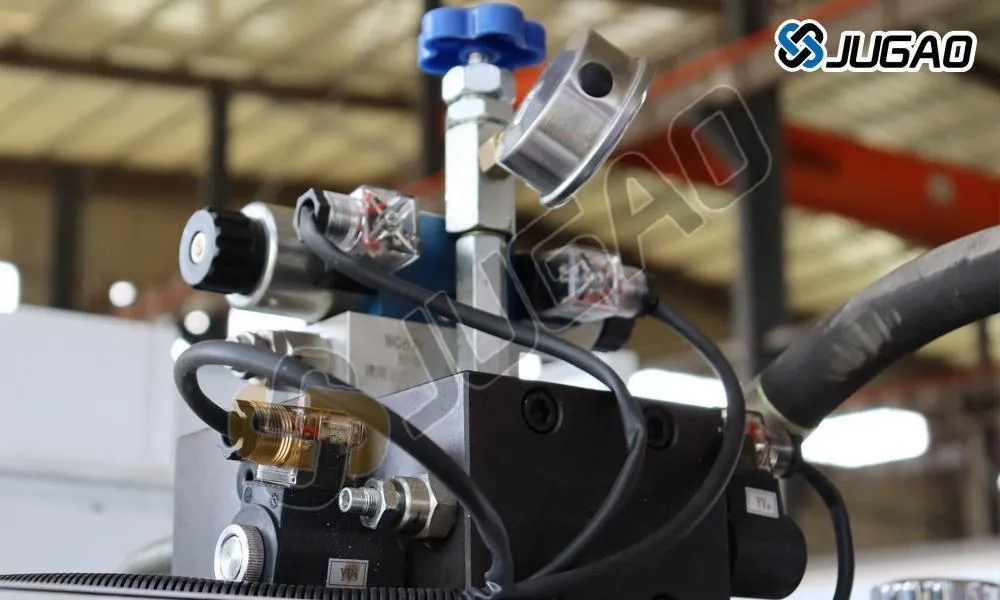-
tel:
+86-13222111178 -
email:
info@ntjugao.com
Comprehensive analysis of press brake: core technical equipment in the field of metal forming
Comprehensive analysis of press brake: core technical equipment in the field of metal forming
Jul 19, 2025
The core value and working principle of press brake
The plasticity of metal materials makes it the basic material of modern industry, and the press brake is the key equipment to achieve precision forming by using this characteristic. As the core equipment in the field of sheet metal processing, the press brake transforms flat metal into various complex geometric shapes by precisely controlling the deformation process, meeting a wide range of manufacturing needs from aerospace to daily household appliances.

Press Brake is an industrial equipment used for cold forming of metal sheets. It applies controllable pressure to make the metal sheet produce plastic deformation at a predetermined position to obtain the required angle and shape. As the core equipment in the field of sheet metal processing, the press brake can complete various processing needs from simple single bending to complex multi-pass forming.
Origin of equipment naming and technological evolution
The professional term "Press Brake" combines two key concepts:
l Press: Derived from the Latin word "pressare", it refers to a mechanical device that applies pressure
l Brake: In Old English, it means a pressing tool and has been used to describe forming equipment since the 14th century
Modern press brakes have developed into high-precision processing systems that integrate mechanical, hydraulic, electrical and CNC technologies. Its technological evolution has undergone a revolutionary leap from manual mechanical to fully automatic CNC control.
Technical classification and performance comparison of modern press brakes
Comparison of mainstream drive technologies
|
Type |
Typical tonnage range |
Repeatability |
Working speed |
Energy efficiency |
Applicable scenarios |
|
Hydraulic drive |
30-6000 tons |
±0.05mm |
Medium |
Medium |
Heavy-duty processing of thick plates |
|
Servo electric |
10-300 tons |
±0.01mm |
High |
High |
Precision thin plate forming |
|
Pneumatic |
5-100 tons |
±0.1mm |
High |
High |
Lightweight rapid prototyping |
|
Mechanical |
20-500 tons |
±0.2mm |
Low |
Low |
Traditional mass production |
Classification by control system
|
Type |
Number of controlled axes |
Positioning accuracy |
Features |
Applicable scenarios |
|
Ordinary NC |
2-3 axes |
±0.1mm |
Simple programming |
Mass production of standard parts |
|
Economical CNC |
4-6 axes |
±0.05mm |
Graphical interface |
Small batches of multiple varieties |
|
Full-function CNC |
8-12 axes |
±0.01mm |
3D simulation/adaptive control |
Complex surface forming |
|
Intelligent bending center |
12+ axes |
±0.005mm |
AI process optimization/IoT connection |
Digital factory |
Analysis of core technical parameters
l Nominal force (Tonnage): determines the thickness of the processable material, calculation formula: T=(K×S×L×σb)/1000
l (K: safety factor 1.2-1.5, S: plate thickness mm, L: bending length mm, σb: material tensile strength MPa)
l Workbench length: standard specifications range from 1m to 12m, determines the maximum processing width
l Opening height: affects the workpiece height and mold size selection
l Deflection compensation system: key technology to ensure the straightness of long workpiece bending
Key components and technical analysis
Frame structure
l Integral welding: C-type/O-type frame, high rigidity
l Stress relief process: vibration aging treatment (eliminating more than 95% of residual stress)
l Finite element optimization: workbench deflection <0.02mm/m

Hydraulic system
l Advanced configuration:
# Proportional servo valve (response time <10ms)
# Accumulator group (instantaneous flow compensation)
# Oil temperature control system (maintaining 40±2℃)
l Energy-saving technology:
# Variable displacement pump (energy saving 30%)
# Pressure matching control

Mold system
l Material standards:
# Upper mold: 42CrMo (hardness HRC52-54)
# Lower mold: Cr12MoV (hardness HRC58-60)
l Geometric parameters:
# V-groove width = 6×material thickness (general rule)
# Tip radius R = 0.2-0.6×material thickness

Forming process
l Air bending: the most commonly used method, the forming angle is determined by the lower die V-mouth and the pressing depth
l Bottom pressure bending: high-precision forming, requiring precise control of pressure and position
l Progressive bending: complex polygonal forming process
l Rolling bending: special technology for large arc forming
Equipment life cycle management
Preventive maintenance system
l Daily inspection: 8 key parameter monitoring (oil pressure/temperature/cleanliness, etc.)
l Quarterly maintenance: hydraulic oil particle size detection (NAS 8-level standard)
l Annual overhaul: guide rail precision calibration and seal replacement
Intelligent maintenance solution
l Vibration monitoring system (predict bearing life)
l Online oil analysis (water/acid value/contamination)
l Remote diagnosis platform (5G technology support)
Technology development trends and innovation directions
Frontier technology application
1. Adaptive control: real-time process adjustment based on material properties
2. Human-machine collaboration: safe area monitoring and guidance assistance
3. Green manufacturing: oil mist recovery efficiency >99%
4. Digital main line: full data connection from design to service

JUGAO press brake represents the highest technical level of current metal forming equipment. Its innovative design not only meets the current manufacturing needs, but also provides reliable basic equipment for the construction of smart factories in the era of Industry 4.0. Choosing a suitable bending solution will significantly enhance the manufacturing capabilities and market competitiveness of the enterprise.
Recent Posts

October 26, 2016
The Most Successful Engineering Contractor
Nov 05, 2025
How to choose the best plate rolling machine?
Oct 29, 2025
Key Configuration Steps for the DELEM DA-66T Tool











